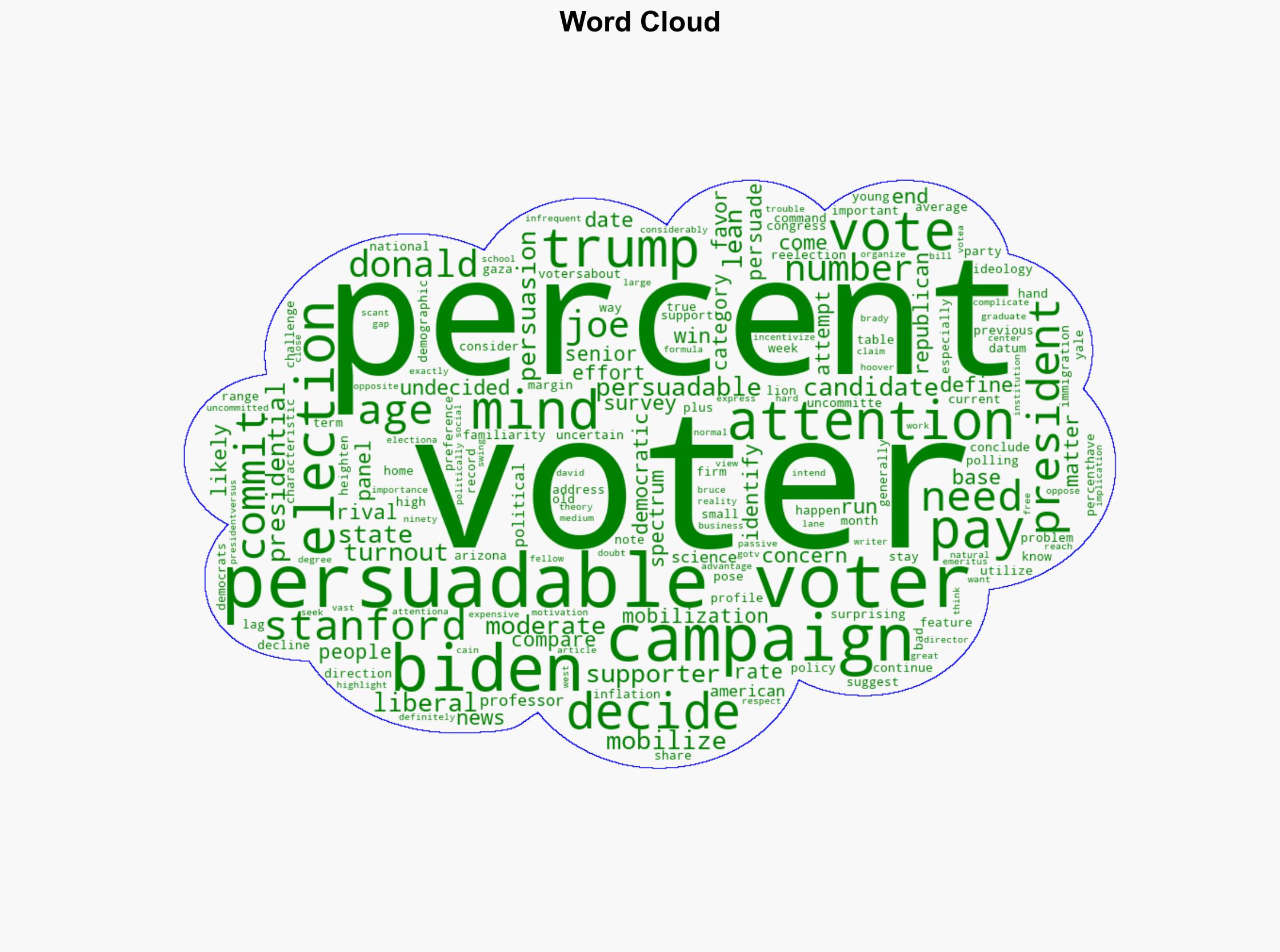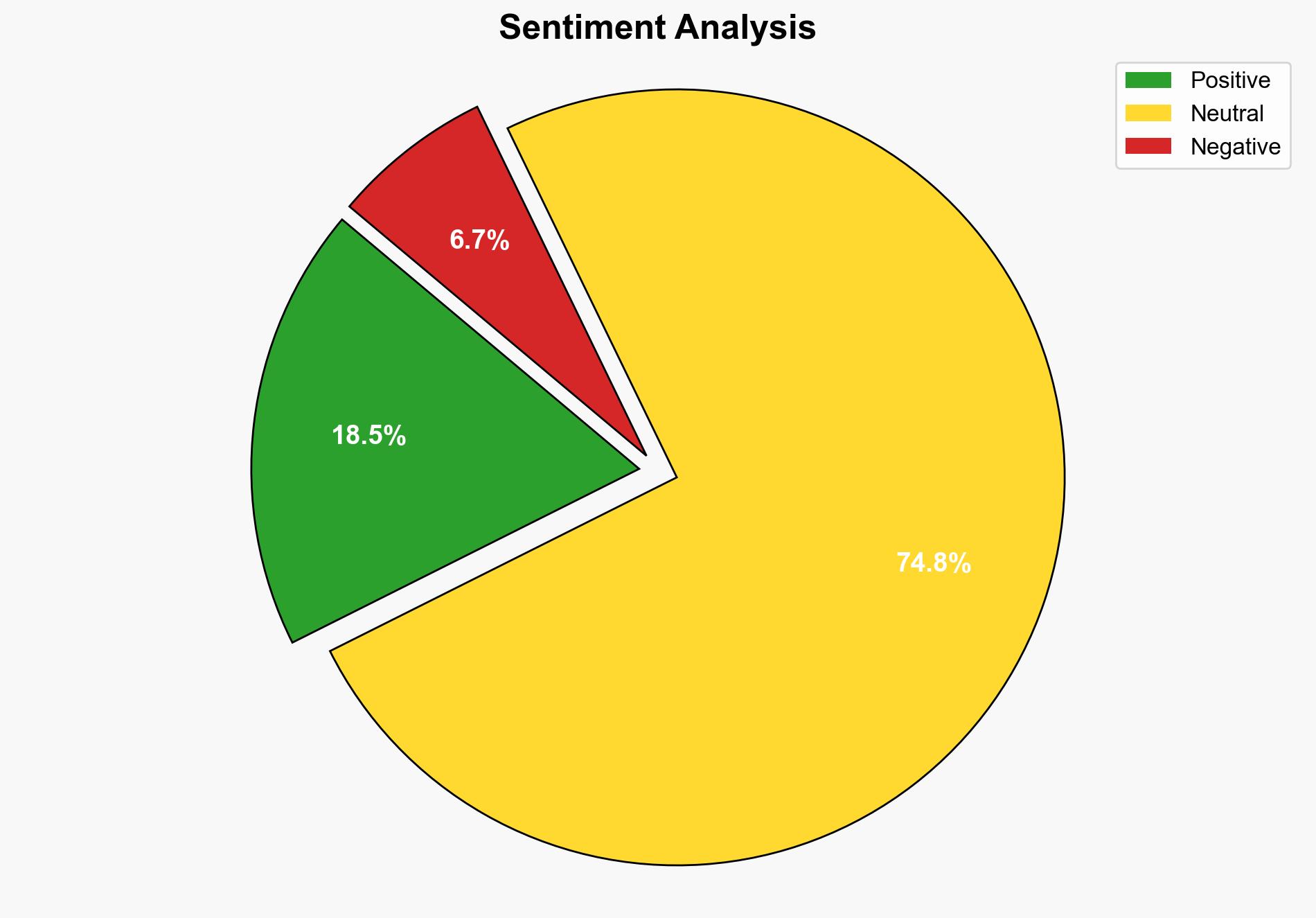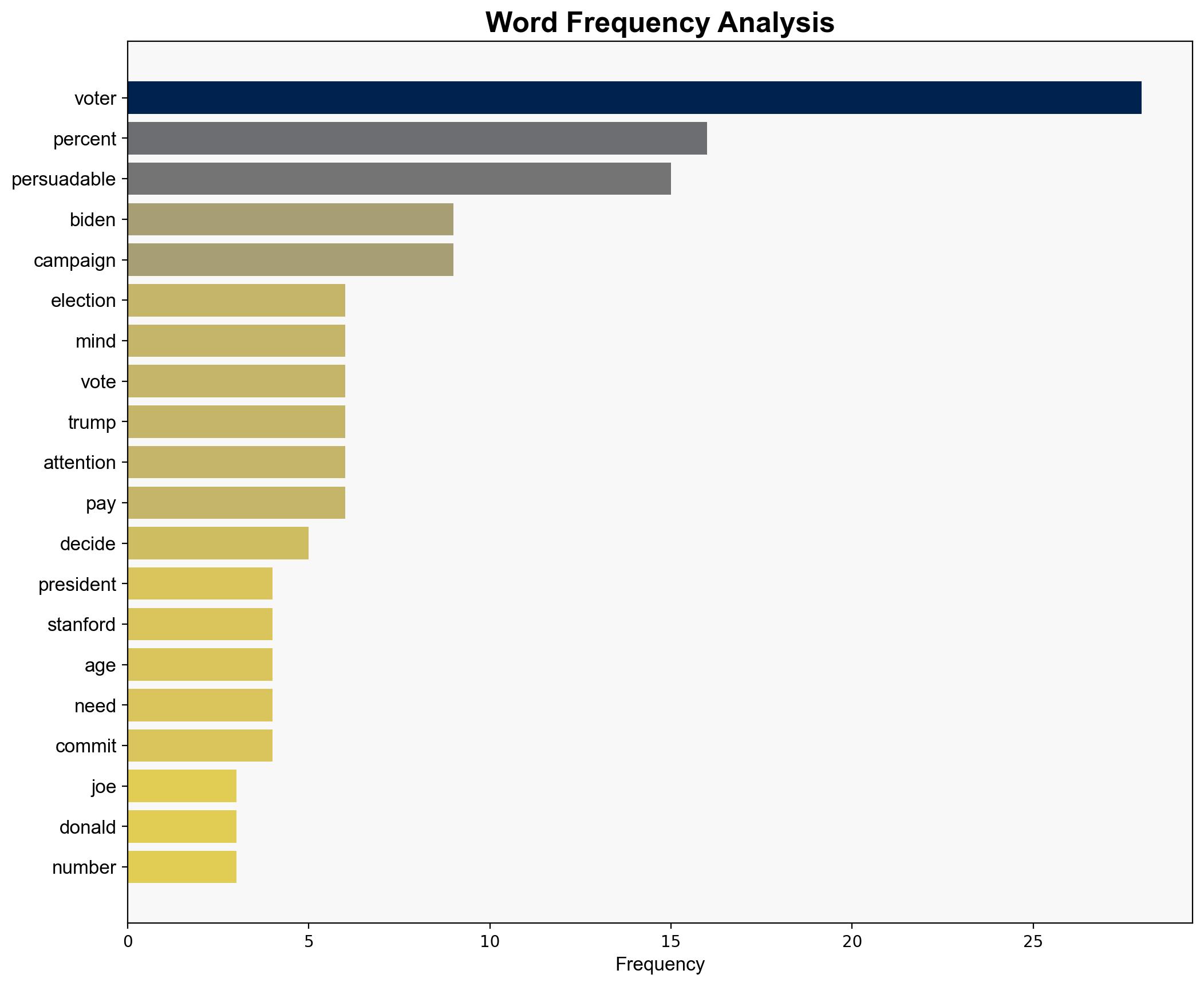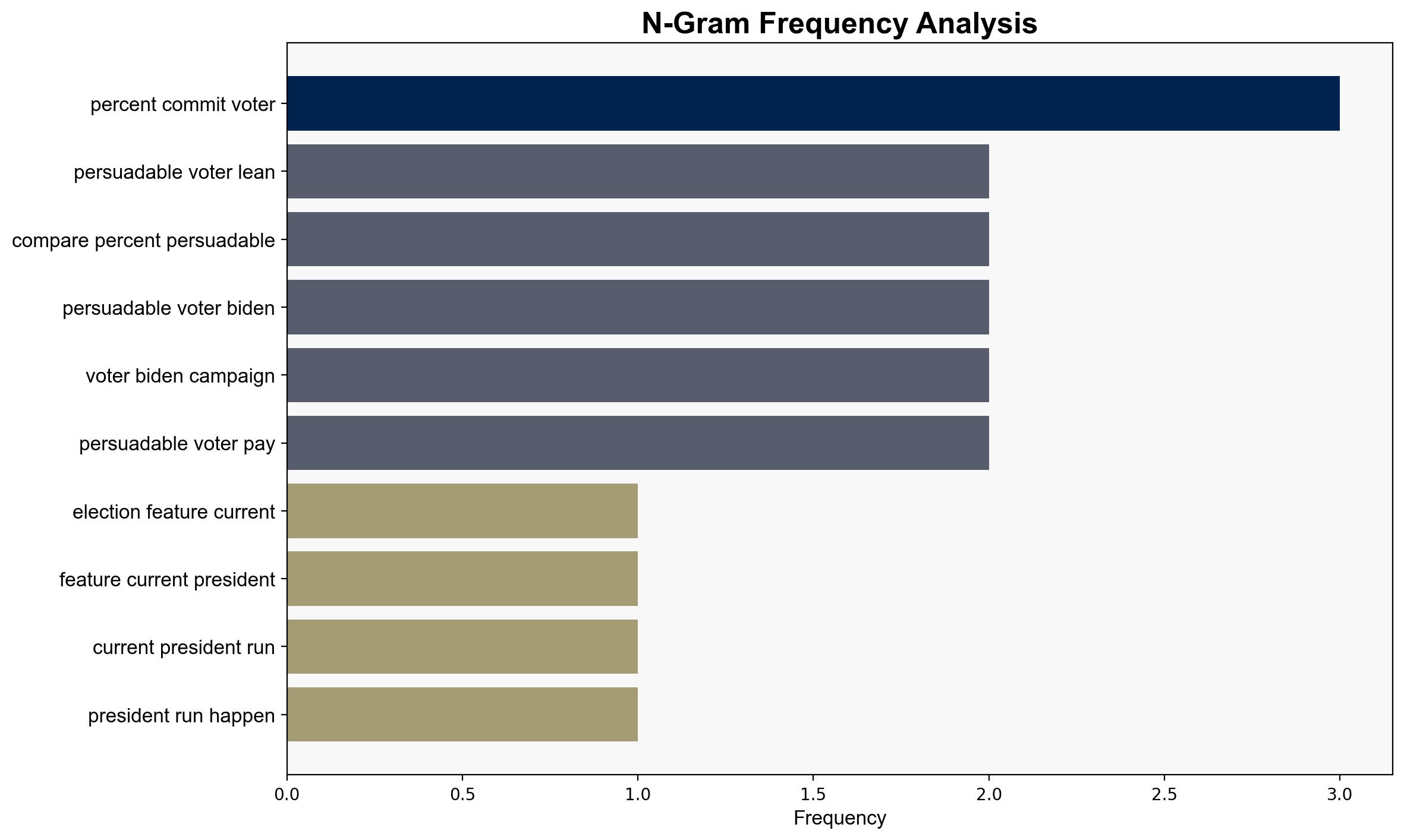Whos Still Undecided About 2024 A Profile of Americas Persuadables – Hoover.org
Published on: 2025-10-09
Intelligence Report: Whos Still Undecided About 2024 A Profile of Americas Persuadables – Hoover.org
1. BLUF (Bottom Line Up Front)
The most supported hypothesis is that the 2024 presidential election will hinge on the successful mobilization and persuasion of undecided voters, who are predominantly moderate and less engaged. Confidence in this hypothesis is moderate, given the complexity of voter behavior and potential shifts in political dynamics. Strategic recommendation: campaigns should intensify targeted outreach and engagement strategies to convert undecided voters, particularly focusing on younger demographics and addressing key issues like the economy and social policies.
2. Competing Hypotheses
1. **Hypothesis A**: The undecided voters, who are moderate and less politically engaged, will ultimately decide the 2024 election outcome. This group is more likely to be swayed by targeted campaign efforts addressing specific policy concerns and mobilization strategies.
2. **Hypothesis B**: The undecided voters will have minimal impact on the election outcome due to low turnout rates and a tendency to remain disengaged, leading to a result driven by the committed voter base of each candidate.
Using the Analysis of Competing Hypotheses (ACH) 2.0, Hypothesis A is better supported due to the data indicating that a significant portion of undecided voters lean towards moderate or liberal ideologies, suggesting they can be influenced by targeted campaign efforts. However, the challenge remains in effectively mobilizing this group.
3. Key Assumptions and Red Flags
– **Assumptions**: It is assumed that undecided voters are open to persuasion and that campaigns can effectively identify and address their key concerns. Another assumption is that voter turnout among undecided voters can be significantly increased.
– **Red Flags**: The potential for cognitive bias exists in assuming undecided voters are a homogenous group. Additionally, there is a risk of overestimating the effectiveness of campaign strategies in mobilizing this demographic.
4. Implications and Strategic Risks
The primary implication is that campaigns must allocate resources effectively to engage undecided voters, which could shift the election dynamics. A failure to do so may result in a low-impact election where the outcome is determined by the existing voter base. Strategically, there is a risk of campaigns misjudging the priorities of undecided voters, leading to ineffective messaging and resource allocation.
5. Recommendations and Outlook
- Campaigns should invest in data analytics to better understand the concerns and motivations of undecided voters.
- Develop targeted communication strategies that address key issues such as the economy, healthcare, and social justice.
- Scenario-based projections:
- Best: Successful engagement of undecided voters leads to a decisive election outcome.
- Worst: Undecided voters remain disengaged, resulting in a contested or unclear election result.
- Most Likely: Partial engagement of undecided voters influences the election outcome, but not decisively.
6. Key Individuals and Entities
– Joe Biden
– Donald Trump
– David Brady
– Bruce Cain
7. Thematic Tags
election dynamics, voter engagement, political strategy, demographic analysis





